CSIS Panel Spotlights the Future of Iran
By Elaine Pasquini
Photos by Phil Pasquini

Washington: On October 18, the Center for Strategic and International Studies hosted a panel to address the subject “Is Iran on the Brink?” Jon B. Alterman, senior vice president and director of CSIS’s Middle East Program, moderated the discussion.
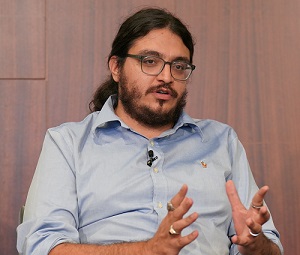
Arash Azizi |
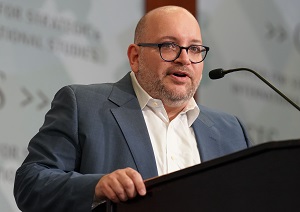
Jason Rezaian |
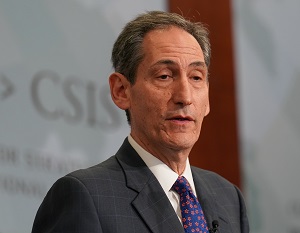
Jon B. Alterman |
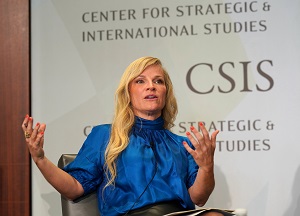
Kirsten Fontenrose |
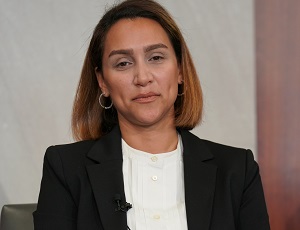
Yeganeh Rezaian |
Washington Post correspondent Jason Rezaian opened the program with comments on the current situation in Iran following the death of a 22-year-old Kurdish woman, Mahsa Hamini, on September 16 while in police custody for allegedly wearing her hijab improperly on the streets of Tehran.
Rezaian, who reported from Iran for the Washington Post from 2009 until he was arrested on espionage charges in 2014, spent 544 days in Tehran’s Evin prison.
Hamini’s death while in custody sparked spontaneous women-led protests on the streets of Tehran. Demonstrations, which included Kurdish, Hazera, Arab, Baluchi and other minority groups, quickly spread throughout Iran and eventually around the world.
“In the 43-year history of the Islamic Republic there have always been protests, always been people pushing back,” said Rezaian, now a nonresident senior associate of CSIS’s Middle East Program. “But what is different right now is the coalescing of disparate groups at the same time demanding fundamental change and more representative rights.”
Kirsten Fontenrose, a nonresident senior fellow with the Atlantic Council’s Scowcroft Middle East Security Initiative, enumerated the indicators that political analysts look for as signs that a protest is seriously threatening a sitting regime.
The high participation of men in protests is one indicator and presently men are out on the streets along with the women, Fontenrose said. Whether the regime is functioning is another indicator and “we’re looking at about one-half right now,” she noted. The turndown of the economy, which is presently the case in Iran, is another sign a regime is in trouble.
“We’re looking at whether the security services have been undermined and they are not,” said Fontenrose. Political elite infighting and elite support of the opposition, both important indicators, presently are not happening at high levels either.
But the most important critical signs which are missing are an organized resistance, a charismatic opposition leader or rallying figure, an off-ramp for the current government, and whether the workers in the gas and oil industry go on strike, which contributed to the fall of the government of Mohammad Reza Pahlavi in 1979, she said.
Since the real sign of a regime failure would include 80 percent of the indicators, “with a lot of these indicators missing, it is not quite there yet until some of these other pieces come together,” Fontenrose pointed out.
Rezaian’s wife, Yeganeh, an Iranian journalist, was arrested with her husband in 2014, but was only held for two months. Rezaian, now a senior researcher at the Committee to Protect Journalists, explained the difference between the current protests as compared to the large one in 2009. This time, she said, “the protesters are asking for fundamental change, not for small changes. People are not asking for reform within the system; people are asking for the change of the system.”
Presently, the younger generation – including men – are out in the streets “sacrificing everything they have, including their lives,” she said. “I call it a women-led revolution because it started as a protest against 40 years of gender apartheid that this regime imposed on Iranian women.”
Arash Azizi, an adjunct instructor at New York University, who focuses on the history of socialist and Islamist revolutionary movements, said the government of President Ebrahim Raisi has lost its legitimacy and fails to represent Iranians on basic levels.
But to overthrow the government there needs to be an organization and leadership, which presently there is not. “Because of repression inside Iran, people have not made effective political organizations,” he explained. “Some regimes, I believe, you can overthrow without organization, but the Islamic Republic is not one of them.”
Azizi reminded the audience that “there is an Iran beyond this regime” and the world should “legitimize Iranian civil society because we will be part of the future of Iran.” And the important issue for Iranians, he added, is the need for a united opposition.
“There will be a life beyond this regime,” Azizi said. “The idea that it will always be in power is not true. It is quite clear that the Iranian nation-state…has traditions that go way back before this revolution and they will be here to stay, but this regime won’t be.”
And the key to opposition leadership is to be able to speak to broad segments of society, Azizi continued, and to say “they will have a future in a future Iranian state. Unity in favor of national interest is important.”
Azizi pointed out there are former Iranian officials and parliament members inside the country who do oppose the regime who were pushed aside as the regime limited itself more and more and they could possibly play a role in a new democratic Iran. “You need them to join if you want to get anywhere,” he argued. “If you are able to put them together it lets them know…they can have a future in a democratic Iran. They can have a future in a free Iran.”
“Despite all of our differences, what gives me hope is that the national identity of Iranians is strong and has a lot of credence compared to many countries,” he concluded.
(Elaine Pasquini is a freelance journalist. Her reports appear in the Washington Report on Middle East Affairs and Nuze.Ink.)

